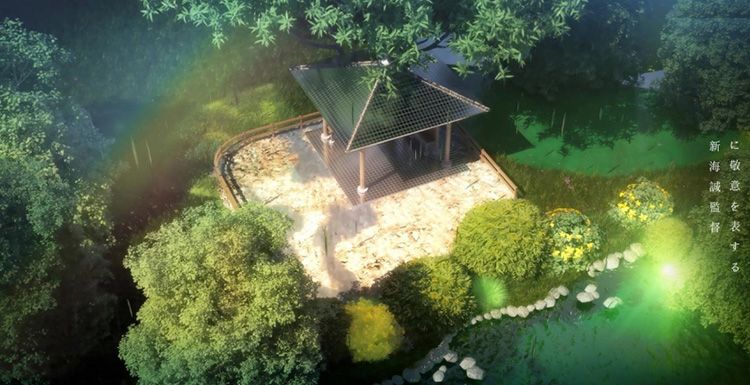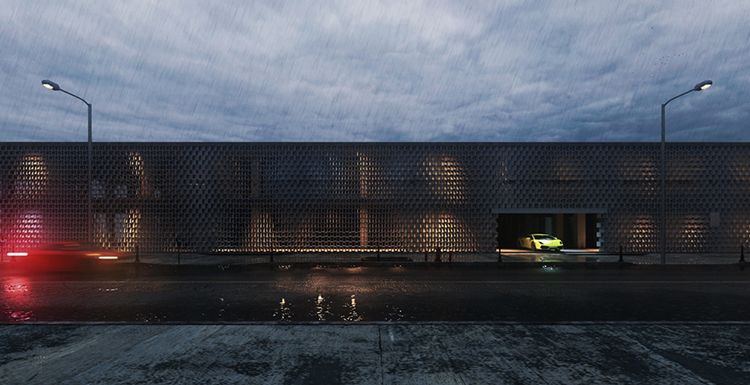How to Make a Sci-fi Spaceship with 3ds Max (1)

The best CPU & GPU render farm and cloud rendering service provider, Fox Renderfarm, is sharing an article for you this time on how to make a fish-shaped spaceship with 3ds Max.
Introduction
This work is inspired by spoons. One day, I saw the spoons when I was eating in the restaurant, I suddenly felt that the spoons turned upside down looked like some kind of fish, and some of them looked like a science fiction-style spaceship. Suddenly I wanted to make this inspiration into a spaceship that can travel in the sky and water.
Part 1. Modeling
After returning home, I spent one night combining some handsome sea creatures, such as whales, sharks, etc. and drew this manuscript with a pencil. Later, I thought the shape looked good, and finally decided to make it into a model with 3ds Max.

The next step is more challenging for me because it is very challenging to make a 2D concept map into a 3D model. In particular, the 2D concept map will only serve as a reference work, while other angles and details need to be found from references and other materials. The road to spaceship design has just begun.


In the production, I constantly modify the details, such as changing the original single tail to a double tail. I also tried to add a co-pilot position next to the tail, but after adding it, it felt unreasonable. Later, the cockpit was changed to a jet engine compartment. Two red fuel tanks were added on both sides of the tail (although some people say they are like batteries)!


All models are not very difficult, but they are constantly adjusting their shapes during the production process. But this may have something to do with the person who made it, and I like it very much from the angle in the picture below, the eyes look very imposing.

Because I have previous experience in industrial design, the design of the spaceship engine is not too difficult for me.



The final model is completed! As long as the overall shape and parts are reasonable, well, the overall shape looks streamlined and comfortable.


Part 2. Texturing
When designing the concept map, I have already considered the material of the spaceship. First of all, the main body of the ship is made of car paint, which is very common in industrial styling, and it is not very difficult to make. The texture of the spaceship mainly uses the standard material of V-Ray, and then some blending. This part is mainly to add different materials and textures to the 1 and 2 masks in the mixed material. The important point is that the "Falloff" map is used in the mask, and the default color sorting of attenuation is white on black. Here you should use the invert button to reverse it and turn it into black on white.
-
The setting of "Material 1" is relatively simple. It is the color displayed in the dark part after the "Attenuation" mask, so the color is black (or a dark color in a certain color system, which is close to black). "Diffuse" is pure black and "Reflection" is pure white, which means 100% complete reflection. Pay attention to check Fresnel reflection. Keep the refraction options as default.
-
"Material 2" is relatively complicated. The reason for saying this is because the material in Material 2 is the "Shellac" material. You should know that its function is to change the color, highlight, and Reflection of "Base Material" and “Shellac Material”, and mixed them by the value of "Shellac Color Blend".
In fact, the settings of the two materials are almost the same, but it should be noted that the diffuse color of "Shellac Material" is the color of the car paint. For example, if you want the model to be yellow, then change it to yellow here. And the diffuse black of "Base Material" is an attenuation color, so that the material can richly reflect the contrast of different angles.

Follow the leading cloud rendering services provider and CPU & GPU render farm, Fox Renderfarm, for the next part: How to Make a Sci-fi Spaceship with 3ds Max (2).
Recommended reading
Top 9 Best And Free Blender Render Farms of 2025
2024-12-30
What is Jibaro? Reveal the Story and Techniques Behind the Production of Jibaro "Love, Death & Robots"
2025-11-03
Top 10 Free And Best Cloud Rendering Services in 2026
2025-12-26
9 Best & Free 3D Rendering Software for Architects & Designers
2025-12-08
Top 8 After Effects Render Farm Recommended of 2025
2025-02-10
Easy Cel Shading Tutorial for Cartoon in Blender Within 2 Minutes
2025-11-26
Shocked! The Secret Behind Using 3D to Make 2D Animation was Revealed!
2026-01-06
How to Render High-quality Images in Blender
2024-12-04
Partners
Previous: A Sharing of How to Make of Disney/Pixar’s “Soul” (3)
Next: How To Sculpt A Stylized Character In ZBrush
Interested







